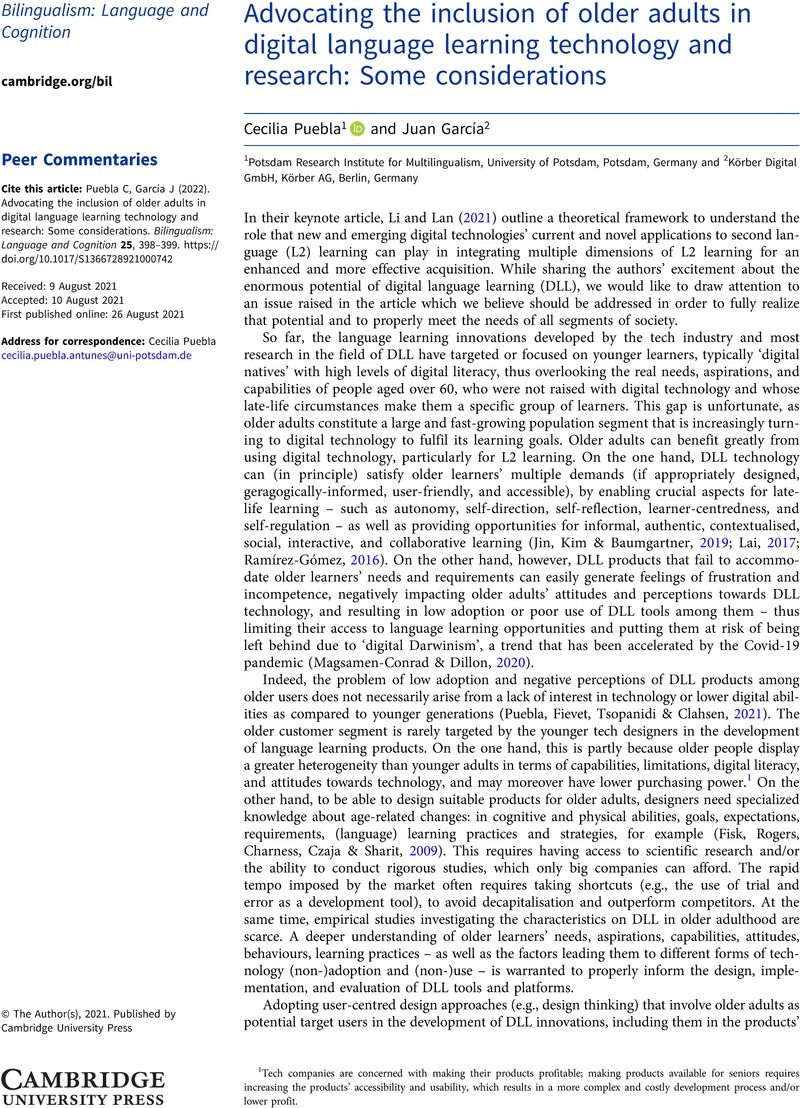Crossref Citations
This article has been cited by the following publications. This list is generated based on data provided by Crossref.
Ali, Muhammad Mooneeb
2022.
Mobile and Sensor-Based Technologies in Higher Education.
p.
56.
Li, Ping
and
Lan, Yu-Ju
2022.
Understanding the Interaction between Technology and the Learner: The Case of DLL.
Bilingualism: Language and Cognition,
Vol. 25,
Issue. 3,
p.
402.
Hwang, Hyun-Bin
Coss, Matthew D.
Loewen, Shawn
and
Tagarelli, Kaitlyn M.
2024.
Acceptance and engagement patterns of mobile-assisted language learning among non-conventional adult L2 learners: A survival analysis.
Studies in Second Language Acquisition,
Vol. 46,
Issue. 4,
p.
969.
Wei, Rining
Wang, Rong
and
Wang, Jing
2024.
Exploring English learning motivation among Chinese older adults.
Language Teaching Research,
Wei, Rining
Reynolds, Barry Lee
Li, Yuansheng
Chen, Hongzhong
and
Wang, Jing
2025.
Is foreign-language-based bilingualism linked to digital literacy among older adults?.
International Journal of Bilingual Education and Bilingualism,
Vol. 28,
Issue. 10,
p.
1169.


